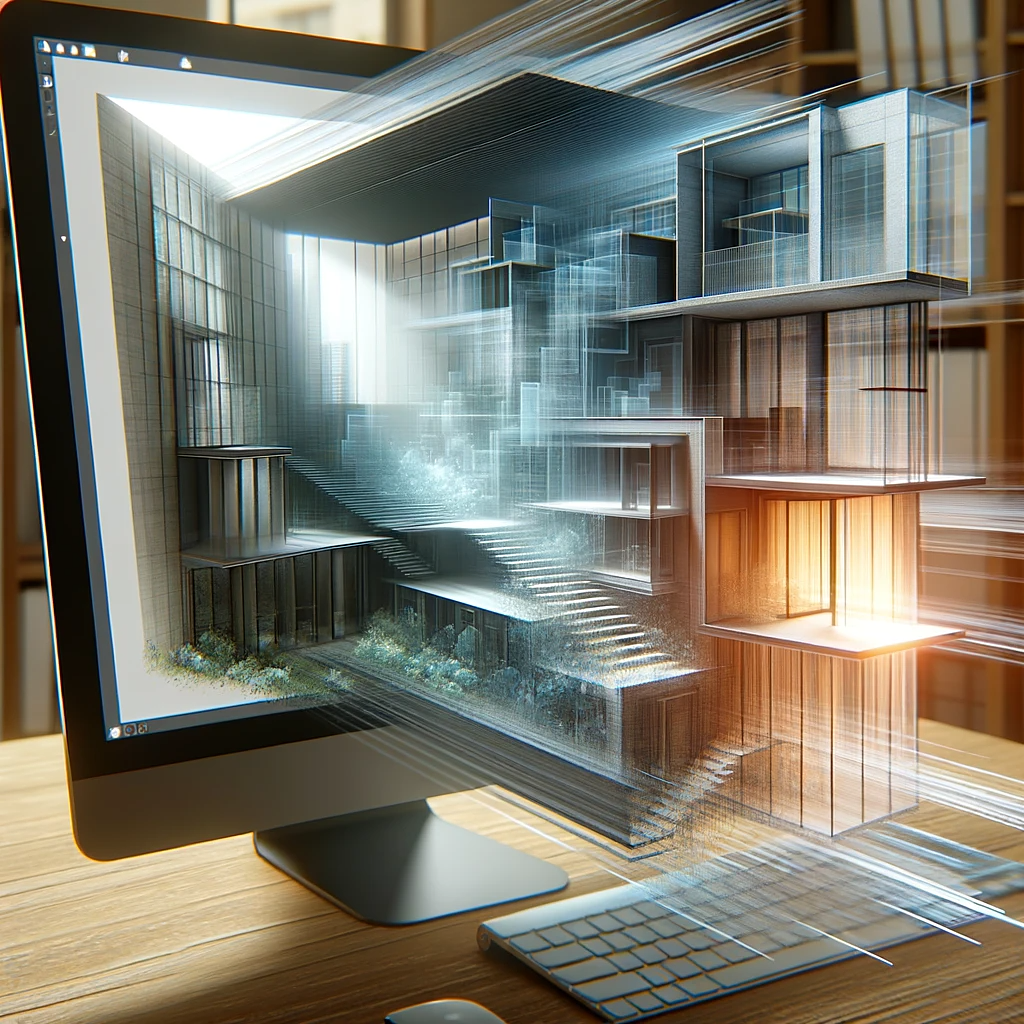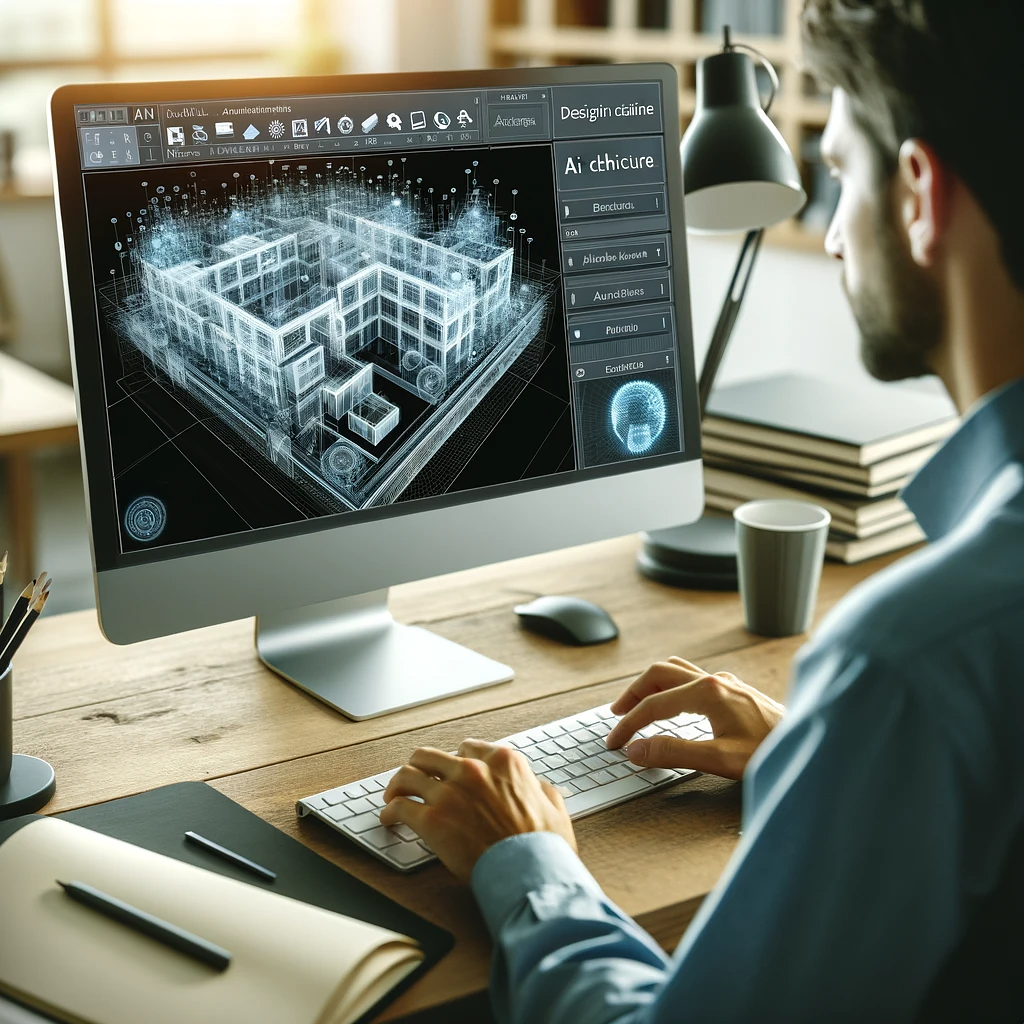
Business In Archviz
The Rise of Real-Time Rendering and AI in Visualization
In the evolving landscape of architectural visualization, two technologies have emerged as game-changers: real-time rendering and Artificial Intelligence (AI).
A recent survey conducted by Chaos Enscape and Architizer, encompassing over 2,000 design professionals, sheds light on the current state and future trajectory of these technologies in the architectural field.
A recent survey conducted by Chaos Enscape and Architizer, encompassing over 2,000 design professionals, sheds light on the current state and future trajectory of these technologies in the architectural field.
The survey reveals a significant trend: real-time rendering is not just widely practiced but also rapidly growing in popularity. This technology, long in development, has reached a pivotal moment, driven by leaps in processing power and software advancements.
Architects are now able to iterate designs with a fluidity that was previously unattainable. The transition to a near-instant feedback loop between design and visualization marks a natural evolution in architectural workflows, enhancing both efficiency and creativity.
Architects are now able to iterate designs with a fluidity that was previously unattainable. The transition to a near-instant feedback loop between design and visualization marks a natural evolution in architectural workflows, enhancing both efficiency and creativity.
Contrasting with the steady rise of real-time rendering is the astonishingly rapid adoption of AI in architectural visualization. The survey highlights that more than half of the firms are actively engaging with AI, either fully embracing it or beginning to experiment. This rapid integration is remarkable, especially considering the relatively recent availability of AI tools in the industry.
AI's ease of use, a notable departure from the typical complexity of new technologies, has facilitated its quick adoption. The design profession finds itself at the forefront of a technological revolution, with AI tools rapidly gaining ground in areas that were once dominated by more traditional practices.
Interestingly, larger firms are leading the way in AI adoption, with over 30% of respondents from firms with more than 100 employees actively incorporating AI into their workflows. This contrasts with smaller firms, where the adoption rate is notably lower. This disparity may be attributed to the larger firms' greater resources and a culture more conducive to embracing new technologies.
The survey also points out that 75% of respondents are using real-time rendering daily or at least twice a week, and freelancers are nearly twice as likely to engage in it on a daily basis. This suggests a flexibility and quick adaptation to new technologies, particularly amongst solo practitioners.
Furthermore, AI-assisted visualizations are becoming increasingly prevalent, with many respondents indicating their intent to invest more in AI in the upcoming year. This investment is seen as a commitment to a technology that is rapidly proving its long-term value in the architectural profession.
In terms of challenges, nearly half of the survey's respondents cited integration issues between real-time software and design modeling software as a significant hurdle. However, with advancements in software development, such as those made by industry leaders like Chaos, these integration challenges are being progressively overcome.
Finally, the survey indicates a clear direction for the future of architectural visualization. The convergence of real-time rendering and AI is set to redefine the industry. As these technologies become more intertwined, they promise to bring about even greater efficiencies and innovations in architectural design and visualization.
Finally, the survey indicates a clear direction for the future of architectural visualization. The convergence of real-time rendering and AI is set to redefine the industry. As these technologies become more intertwined, they promise to bring about even greater efficiencies and innovations in architectural design and visualization.
It is a moment of transformation in the field of architectural visualization, driven by the dual rise of real-time rendering and AI. As these technologies continue to evolve and integrate, they are poised to redefine the standards and practices of architectural design, promising a future of enhanced creativity, efficiency, and technological sophistication.
You can download the full report here.
You must be logged in to post a comment. Login here.
About this article
A recent survey conducted by Enscape and Architizer, encompassing over 2,000 design professionals, sheds light on the current state and future trajectory of these technologies in the architectural field.
visibility595
favorite_border1
mode_comment0








